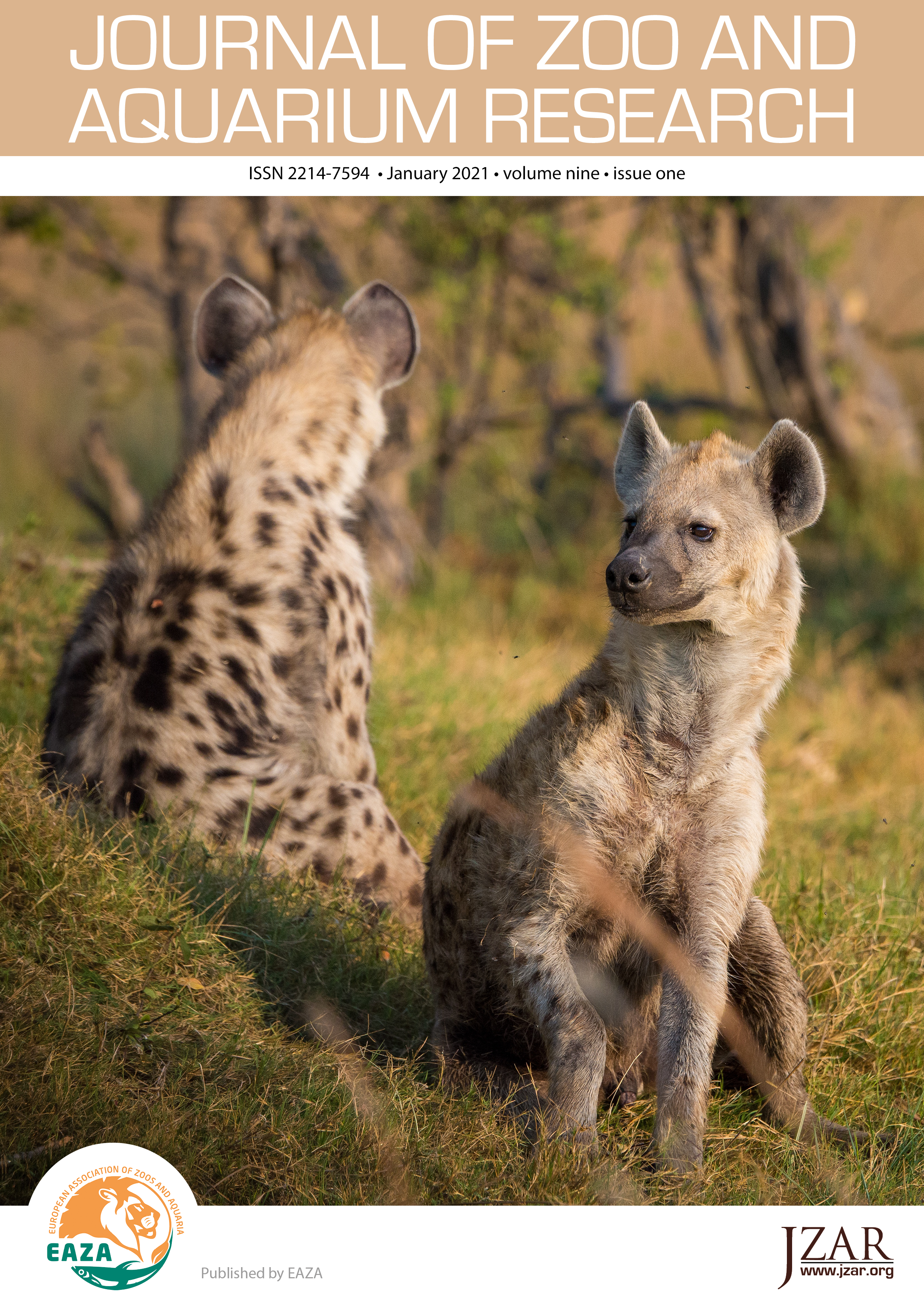Evaluation of an odour detection dog for non-invasive pregnancy diagnosis in polar bears (Ursus maritimus): Considerations for training sniffer dogs for biomedical investigations in wildlife species
DOI:
https://doi.org/10.19227/jzar.v9i1.568Keywords:
carnivore reproduction, polar bear, pregnancy test, pseudo-pregnancy, reproductive monitoring, sniffer dogAbstract
Odour-detection dogs are utilised by law enforcement to identify illegal substances, by conservation groups to locate scat from specific species, and more recently, in biomedical investigations such as cancer detection. Because dogs can detect target odours in samples that can be collected non-invasively, such as faeces, they may be useful in diagnostic evaluations of zoo animals; however, reports are scarce describing the application of odour-detection dogs in medical diagnoses of wildlife species. The objective of the current study was to investigate the reliability of a trained dog for pregnancy detection of polar bears Ursus maritimus, a species for which there is no means of non-invasive pregnancy diagnosis. Using over 300 faecal samples collected from zoo-housed polar bears, a 2-year old beagle was trained to discriminate samples originating from pregnant bears from samples collected from non-pregnant individuals. At training evaluation, the dog’s sensitivity (true positive rate) and specificity (true negative rate) were 1.00. In two real-time tests performed during consecutive cubbing seasons, the dog evaluated samples collected from 16 female bears in the first year and 17 the subsequent year. The dog’s sensitivity was 0.00 both years and specificity was 0.97 and 1.00 during the first and second year, respectively. The reduced sensitivity in testing versus training may be attributable to several causes, including failure to generalise the target odour to novel pregnancies. It is likely that a large number of unique cases of condition are required to sufficiently train an odour-detection dog, which may be prohibitive in wildlife studies when sample sizes are liable to be limited.
Downloads
Published
How to Cite
Issue
Section
License
JZAR fulfils the DOAJ definition of open access and provides free and open access to the full text of all content without delay under a Creative Commons licence. The copyright holder of JZAR publications grants usage rights to third parties, allowing for immediate free access to the work and permitting any user to read, download, copy, distribute, print, search, or link to the full texts of articles.







